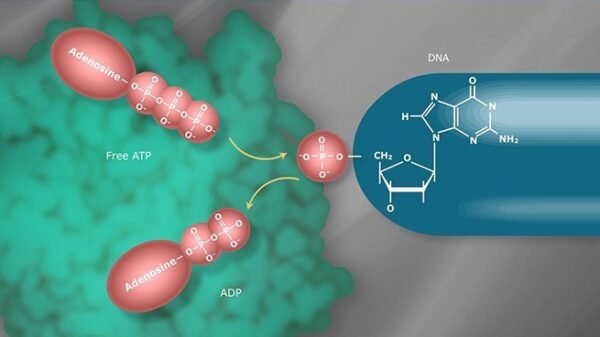
Hallmarks of Cancer
Cancer is a complex disease that can have a wide range of properties, based on the specifics of the mutations that drive it, as well as epigenetic changes and changes to the local cellular environment of the tumor, often called the tumor microenvironment. Progression of each individual cancer will differ, based on the types of changes that arise, and the response of the body at each step. However, there are some common cellular features that can be generally observed during the onset and progression of cancer. They are referred to as the Hallmarks of Cancer.

Growth control
– Sustained proliferative signaling promotes cell division. This can occur, for example, when there is a gain-of-function mutation that increases the expression or activity of a proto-oncogene, leading to an increase in proliferative signals.
– Evasion of growth suppressors occurs when a cell is able to bypass the signals that normally keep division in check. This can occur when there is a loss-of-function mutation in a tumor suppressor gene that prevents inappropriate division.
– Enabling replicative immortality means continued division of cancer cells, which is critical for tumor growth. Cancer cells can accumulate mutations that allow them to bypass the standard limitation on the total number of times that a cell can divide.
– Deregulating cellular energetics means that the metabolism of the cancer cell is altered in a way that enables more rapid or sustained proliferation or other oncogenic effects.
Survival
– Resisting cell death is related to accumulation of mutations in the apoptotic regulators or machinery that controls programmed cell death. Mutations in these genes can allow the cell to survive in the presence of signals that would normally trigger apoptosis, such as extensive DNA damage.
– Evasion of immune destruction. Depending on the mutations that accumulate, cancer cells may be more or less recognizable by the immune system. Those that are less recognizable are more likely to survive and develop a tumor or, conversely, tumor cells that would be otherwise eliminated by the host’s immune system may express immunosuppressive signals.
Cellular environment
– Activation of invasion and metastasisrelates to the ability of cancers to spread locally (invasion) and around the body (metastasis). Cancer cells can achieve these capacities through accumulation of mutations in the machinery that regulates attachment between cells.
– Induction of angiogenesis, or the development of new blood vessels, increases the oxygen and nutrient supply to the cancer cells, encouraging growth. This can occur when mutations affecting the oxygen sensing and signaling pathway make the cells appear oxygen-starved, which stimulates the development of new blood vessels.
Enabling characteristics
– Genome instability and mutations can occur when DNA repair machinery is compromised. Genomic instability can contribute to the accumulation of mutations that produce the other hallmarks.
– Tumor-promoting inflammationcan also contribute to the development of many hallmarks. Even at early stages of development, cancer cells attract immune cells, which raise an inflammatory response. Although this response is present to attack cancer cells, as a side effect, it can lead to production of signaling factors in the tumor microenvironment, and this way promote hallmark features, such as growth, survival, angiogenesis and metastasis.
Overall, these hallmarks and enabling characteristics provide a framework for thinking about the types of events that underlie cancer development, and for understanding the mutations that contribute to these events.





Leave a Reply